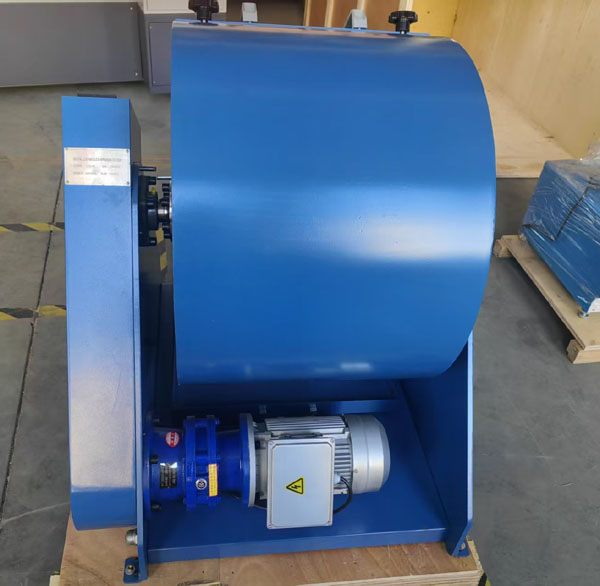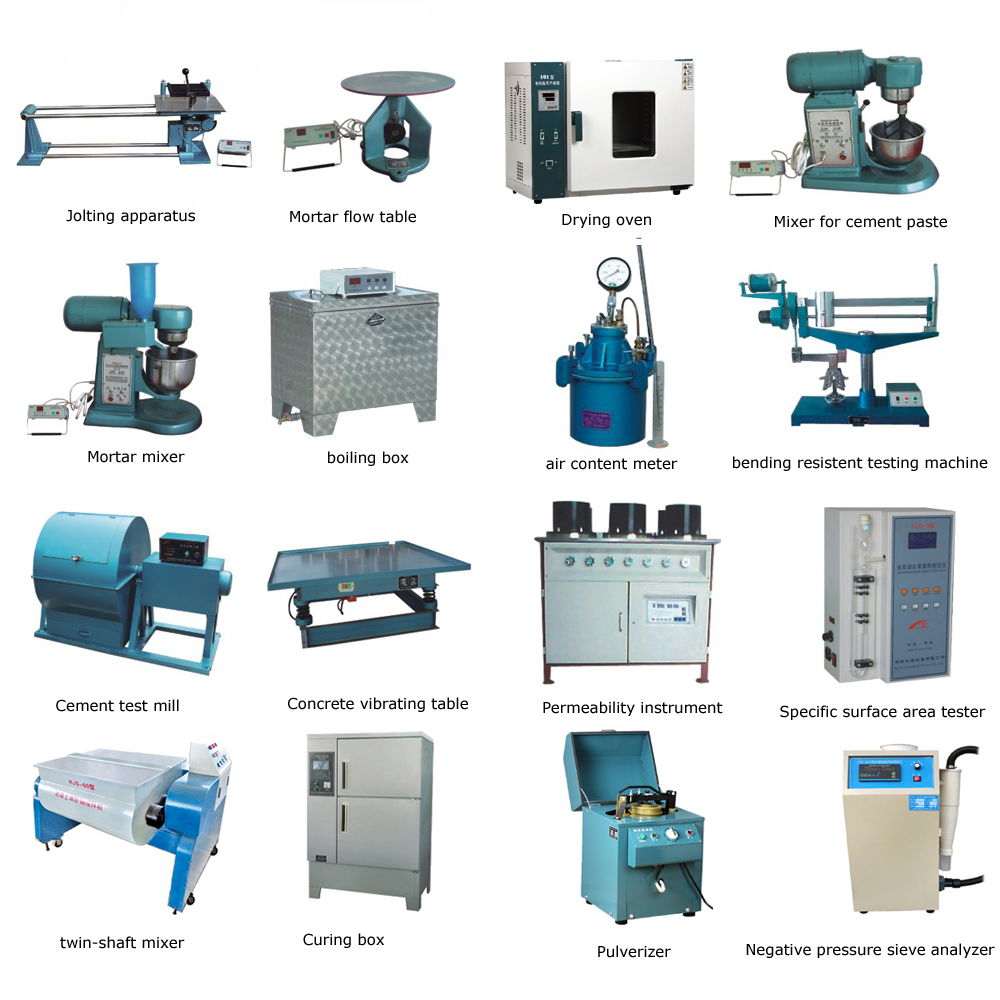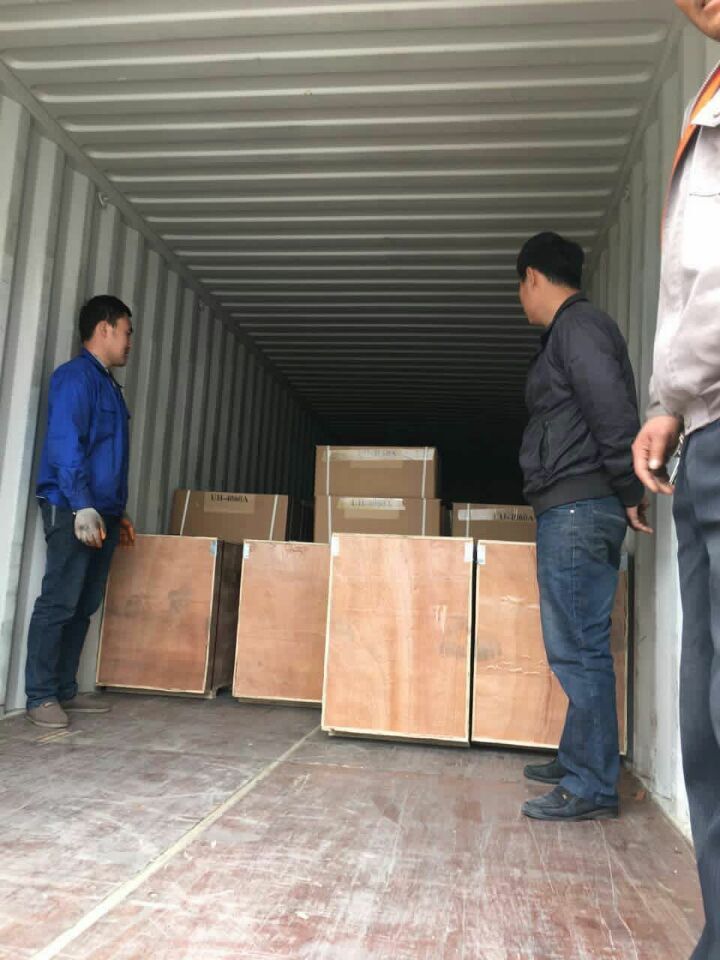Aggregate and Rock Los Angeles Abrasion Machine
Aggregate and Rock Los Angeles Abrasion Machine
ll in all, the Los Angeles Abrasion Tester plays a vital role in the evaluation of aggregate materials. By evaluating their durability and resistance to wear, it helps ensure that construction projects are built on a solid foundation. As the demand for high-quality materials continues to grow, the importance of the Los Angeles Abrasion Tester in the industry cannot be overstated. Its ability to provide reliable data is essential to the successful completion of construction projects, ultimately helping to safeguard the safety and longevity of infrastructure.
Main Technical Parameters:
1. Inner diameter of the cylinder × Inner diameter: (711 ± 5) mm × (508 ± 5) mm
Wall thickness: (12 ± 0.5) mm
Feeding port diameter: (150 ± 3) mm
Partition: (Size: (89 ± 2) mm, Thickness: (25 ± 1) mm)
2. Motor power: 1.5 KW, Rotation speed: 30 – 33 r/min
3. Revolution counter for automatic recording (automatically displays the number of cylinder rotations)
4. Steel balls: Φ45.6 mm – Φ47.6 mm, Mass: 390 – 445 g
PACKING:
Get to know Los Angeles Abrasives
The Los Angeles Abrasion Tester is an essential piece of equipment for the construction and materials testing industries. It is designed to assess the hardness and durability of aggregates, which are essential ingredients in the production of concrete and asphalt. The machine simulates the wear and tear of aggregates during transport and use, providing valuable insight into their performance in real-world applications.
The testing process involves placing a measured amount of aggregate into a rotating drum along with steel balls. As the drum rotates, the aggregate collides with the steel balls and the inside of the drum, causing wear and degradation. After a predetermined number of rotations, the aggregate is removed and the amount of wear is measured. This measurement is usually expressed as a percentage of the original weight of the sample and is called the Los Angeles Abrasion Value (LAAV).
The significance of the Los Angeles Abrasion Machine is its ability to predict the life and stability of building materials. Lower LAAV values indicate that the aggregate is more durable, which is critical for projects that require high-performance materials, such as highways and bridges. Conversely, higher LAAV values indicate that the aggregate may not withstand the rigors of use, potentially leading to premature failure of the building surface.
In addition to its practical applications, the Los Angeles Abrasion Tester is also a standard test method recognized by multiple organizations including ASTM (American Society for Testing and Materials). This standardization ensures consistency and reliability of test results, making it an essential tool for engineers and quality control professionals.
In summary, the Los Angeles abrasion tester plays a vital role in evaluating the quality of construction aggregates. It provides reliable durability measurements that help ensure infrastructure projects last, ultimately contributing to safer, more resilient communities.
Standard: ASTM C131, EN 1097-2
Los Angeles Abrasion Machine
Los Angeles Abrasion Machine is used to measure the degradation of mineral aggregate resulting from a combination of actions including abrasion, impact, and grinding in a rotating steel drum containing steel spheres, evaluating the resistance of aggregates like rocks and gravels to wear. The test involves a sample of aggregate to abrasion using steel balls in a rotating drum. The abrasion loss result is then measured as a percentage of the original sample weight, indicating the aggregate’s durability and suitability for various construction applications. This test determines the quality and longevity of materials used in road construction, concrete production, and other civil engineering projects.
Features of Los Angeles Abrasion Machine
- Sound Proof Cabinet: This helps reduce noise during operation, providing a quieter testing environment.
- Control Panel: Allows for easy control and adjustment of the machine’s drum speed and monitors the testing process.
- Receiving Tray: Collects the aggregate and abrasion debris during testing, ensuring easy cleanup and analysis afterward.
- Drum Speed 31 – 33 RPM: The rotating drum operates at a specified speed range to ensure consistent and accurate testing conditions.
- ASTM, AASHTO, UNI, CNR Abrasive Charges (Set of 12 nos.): Accessories Option offering a set of abrasive charges compliant with various standards (ASTM, AASHTO, UNI, CNR) for testing different types of aggregates and meeting specific testing requirements. Inside the drum, a specified number of steel spheres or balls are placed. These balls have a standard diameter and are used to subject the aggregate sample to abrasion, impact, and grinding.
Technical Specifications of Los Angeles Abrasion Machine
Standards
- ASTM C131: Standard Test Method for Resistance to Degradation of Small-Size Coarse Aggregate by Abrasion and Impact in the Los Angeles Machine. This standard outlines procedures for conducting the Los Angeles Abrasion Test, which evaluates the hardness, toughness, and durability of small-size coarse aggregates (typically used in concrete) by subjecting them to abrasion and impact in the Los Angeles Abrasion Machine.
- EN 1097-2: A European standard about “Tests for Mechanical and Physical Properties of Aggregates. Determination of Resistance to Fragmentation of coarse aggregates by subjecting them to abrasion, impact, and grinding in the Los Angeles Abrasion Machine. Provides detailed procedures for conducting the test, including sample preparation, operation of the machine, and calculation of abrasion loss.
Test Procedure of Los Angeles Abrasion Machine
- Sample Preparation:
- Obtain a representative sample of the aggregate material to be tested. The sample should be large enough to provide a statistically significant result.
- Ensure that the sample is clean, free of dust, and has been properly dried to remove moisture.
- Preparation of Test Apparatus:
- Set up the Los Angeles Abrasion Machine according to the manufacturer’s instructions.
- Place a specified number of steel spheres or balls (usually between 12 and 48) inside the rotating drum.
- Ensure that the drum is securely mounted and capable of rotating horizontally around its axis.
- Test Specimen Loading:
- Measure the appropriate amount of aggregate sample according to the test specifications (typically between 5,000 and 10,000 grams).
- Place the aggregate sample into the rotating drum along with the steel spheres.
- Test Operation:
- Close the drum lid securely to prevent spillage during testing.
- Start the rotation of the drum at a specified speed, usually between 31 and 33 revolutions per minute (RPM).
- Allow the drum to rotate for a predetermined number of revolutions, typically between 500 and 1000.
- End of Test:
- After the specified number of revolutions, stop the rotation of the drum.
- Carefully remove the aggregate sample from the drum and transfer it to a receiving tray or container.
- Collect any fine particles or debris generated during the test for further analysis.
- Measurement and Calculation:
- Weigh the collected aggregate sample and record the weight accurately.
- Calculate the abrasion loss as a percentage of the original sample weight using the formula: Abrasion Loss (%)=((Initial Weight−Final WeightInitial Weight) / Initial Weight) ×100
- Reporting:
- Report the test results, including the abrasion loss percentage, along with any relevant information such as the type of aggregate, test conditions, and test standard followed.
- Quality Control
- Ensure that the test procedure is performed according to the appropriate standard (e.g., ASTM C131, EN 1097-2) and in compliance with any relevant specifications or regulations.
- Conduct regular calibration and maintenance of the Los Angeles Abrasion Machine to ensure accurate and reliable test results.




















